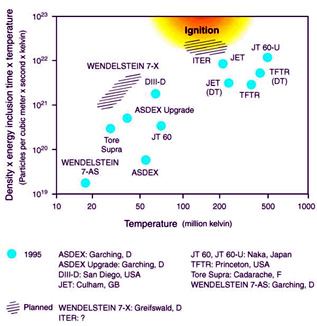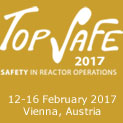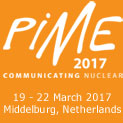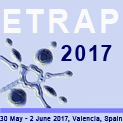Fusion
 scroll scroll 
Formation of a heavy nucleus from lighter nuclei releasing
energy - the binding energy. Possible fusion reactions:
D + T -> 4He + n + 17.58 MeV,
D + D -> 3He + n + 3.27 MeV,
D + D -> T + p + 4.03 MeV,
D + 3He -> 4He + p + 18.35 MeV,
p + 11B -> 3 4He + 8.7 MeV.
The deuterium-tritium reaction is the easiest to realize
among all possible fusion reactions. Deuterium is available in sufficient
quantity in the oceans of the world; tritium can be "bred"
from the lithium element - which is also available in abundance - by
means of the neutrons generated during the fusion process.
Breeding reactors for the generation of tritium from lithium:
7Li + n -> 4He + T + n -2.47 MeV,
6Li + n -> 4He + T + 4.78 MeV.

Fusion principle
During fusion, two atomic nuclei - e.g. nuclei of
the hydrogen isotopes deuterium and tritium - must be brought so close
together that they fuse in spite of the repellent electric power of
their positive nucleus charges. Two nuclei must fly against each other
with high speed to overcome their mutual repulsion. The required speeds
of the particles are achieved at high temperatures of about 100 million
degrees. The atoms of a gas subsequently disintegrate into electrons
and nuclei and the gas is ionized. A completely ionized gas is called
plasma. Plasma is electrically conductive and its motion can therefore
be influenced by electric and magnetic fields. Advantage is taken of
this fact in fusion facilities where the hot plasma is enclosed by a
magnetic field cage. In a magnetic field, the Lorentz force acts on
the charge carriers. As a result of this force, the charge carriers
perform a spiral movement along the magnetic field lines. Ideally, a
contact with the container wall and thus heat transport to the wall
needs to be prevented. As arrangements to magnetically enclose the plasmas
within a ring the systems of the type Tokamak and stellarator (see 'Tokamak' and 'stellarator') are usual. (See
also 'JET' and 'ITER').
The main research target in plasma physics is to find a suitable procedure
allowing a controlled fusion reaction in the form of a chain reaction
that enables use of the released energy. During the fusion of deuterium
and tritium to form 1 kg helium, an energy of about 120 million kWh
is released corresponding to a gross calorific value of 12 million kilograms
of coal.

Fusion experimental facilities and the
plasma conditions reached by them
back
|
|
ENS conferences |
| |
 |
TopSafe 2017
12-16 Feb. 2017
Vienna, Austria |
 |
PIME 2017
19 - 22 March 2017, Middelburg Netherlands |
 |
RRFM 2017
14 - 18 May 2017 in Rotterdam, Netherlands |
 |
ETRAP 2017
30 May - 2 June 2017, Valencia, Spain |
|
|